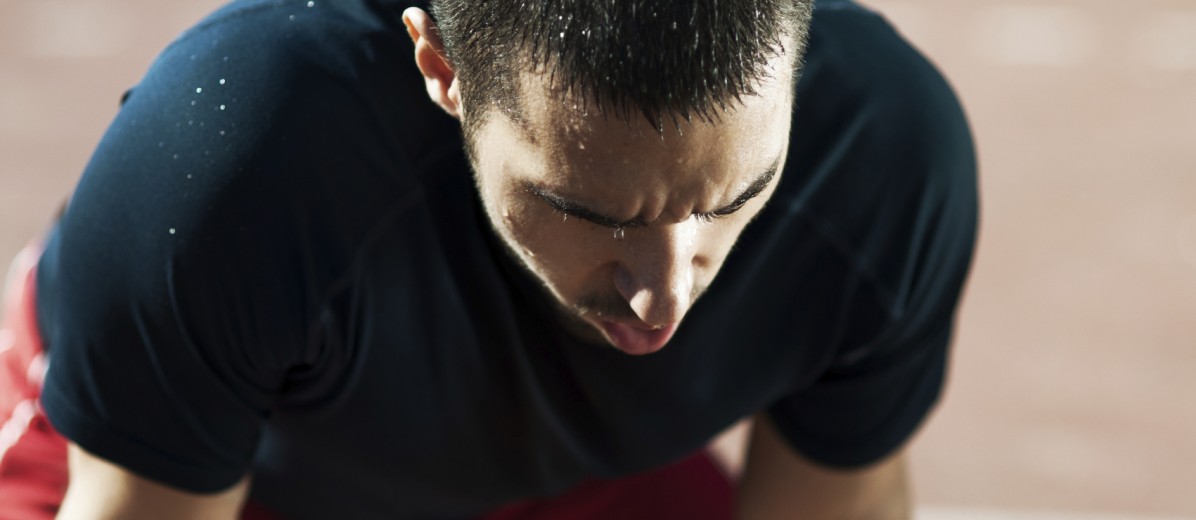No matter the exercise or the person doing it, no one is immune from the almost immobilizing affects of what some have termed “The Wall”. Anyone that is active has hit a level of exercise fatigue that can be caused by a number of factors. Let’s learn a little about them and how to reduce the effects of workout fatigue.
You can experience two types of exercise fatigue: peripheral or central. The human body runs on energy derived from foods that we consume. The food is converted to glucose, which is further broken down into a useable energy source for muscle cells. Strenuous physical activity or exercise increases the demand for energy and affects the biochemical balance within the muscle cells. Hard working muscles produce a greater amount of byproducts from the breakdown of the energy and the muscles themselves.
Byproducts, such as lactic acid, can accumulate in muscles and directly affect the mechanical functioning of cells. Working muscles also produce heat as a result of the constant contractions. If you have ever broken a sweat during a workout then you have experienced the heat being released as a byproduct of your workout. The increased demand for energy to power muscles for your workouts, the byproducts produced from the breakdown of energy and the heat produced by hard working muscles all lead up to the first type of fatigue — peripheral.
The second type of fatigue is central fatigue or fatigue that occurs due to factors affecting the central nervous system (CNS). Your CNS is made up of the brain, spinal cord and nerves that exit the cord. Nerves exit the spinal cord and innervate muscles around the body. The combination of nerve and the muscle it innervates is called a motor unit (MU). When you need the extra “oomph” to lift 225lbs or squat 400lbs, the brain sends a signal to the motor unit to contract at a great rate than if you were to lift, say a cup of coffee. The more weight being lifted, the greater the signal the brain sends to the MU. Central fatigue occurs due to poor MU firing. During a prolonged or intense workout session the rapid drop in energy stores, production of byproducts and increase in temperature due to heat production, all decrease the neural drive leaving you feeling almost absolute weakness.
What this all amounts to is you “hitting the wall.” You may find yourself unable to complete your final set or run those last few miles. Peripheral fatigue will leave you with a loss of strength and power due to its direct effect on the muscle. Central fatigue will leave you with a lack of coordination and decreased MU firing which equals decreased strength.
What can help fight Fatigue?
Exercise
Exercise is the best medicine. Although completely beating fatigue is impossible, training to your fatigue point, then pressing slowly past it, can allow you to work harder and longer. For example, if you are an aspiring MMA fighter needing to make it through several five minute rounds then you need to train to exhaustion. This specific type of training will force endurance adaptation during your exercise.
Food
Next, would be food. Because fatigue and nutrition are intimately related, maintaining an adequate supply of good carbohydrates in your diet is going to be the key in staving off fatigue. Remember, once you burn through your energy stores, it leads to a cascade of strength, power loss, and mental fatigue. Your brain is powered by glucose (broken down form of carbohydrates). So the depletion in energy results in an increase in mental fatigue. Recommendation? Carb up before a workout.
Supplementation
Staying power has been in the eye of both the fitness and sport world for a long time. Supplements have been designed to help you get beyond when hitting the wall in a number of ways.
Some specifics on supplements after the jump…
- Protein: Specifically, branch chain amino acids (BCAA’s). This specific group of amino acids has seen an increase in use and is used by muscles during heavy exercise. BCAA’s are touted to increase energy by blocking a chemical called tryptophan, a precursor to serotonin. An abundance of this chemical in the brain leaves you feeling tired and worn out.
- Caffeine: Caffeine has a glycogen sparing effect. During exhaustive workouts, caffeine can mobilize fatty acids to be used as an energy source. This spares the precious glycogen from being depleted too soon, giving you staying power.
- Compression Garments: Or CG’s, such as those sold from 2XU can dampen mechanical strain associated with the exercises themselves, helping with removal of muscle metabolic waste, reducing exercise induced swelling and muscle soreness, and promoting cellular repair.
- Music:: Yes, music. Music can get you going in more ways than one. Preferred music choice can get you over the some of the effects of central fatigue, namely the mental fatigue associated with the energy depletion.
Unless you are the energizer bunny or produce your own energy to get your workouts competed, fatigue is unavoidable, but follow the above tips and it does not have to be debilitating.
If you found this article helpful. Check these out: Protein Demystified; 5 Muscle Building Foods

